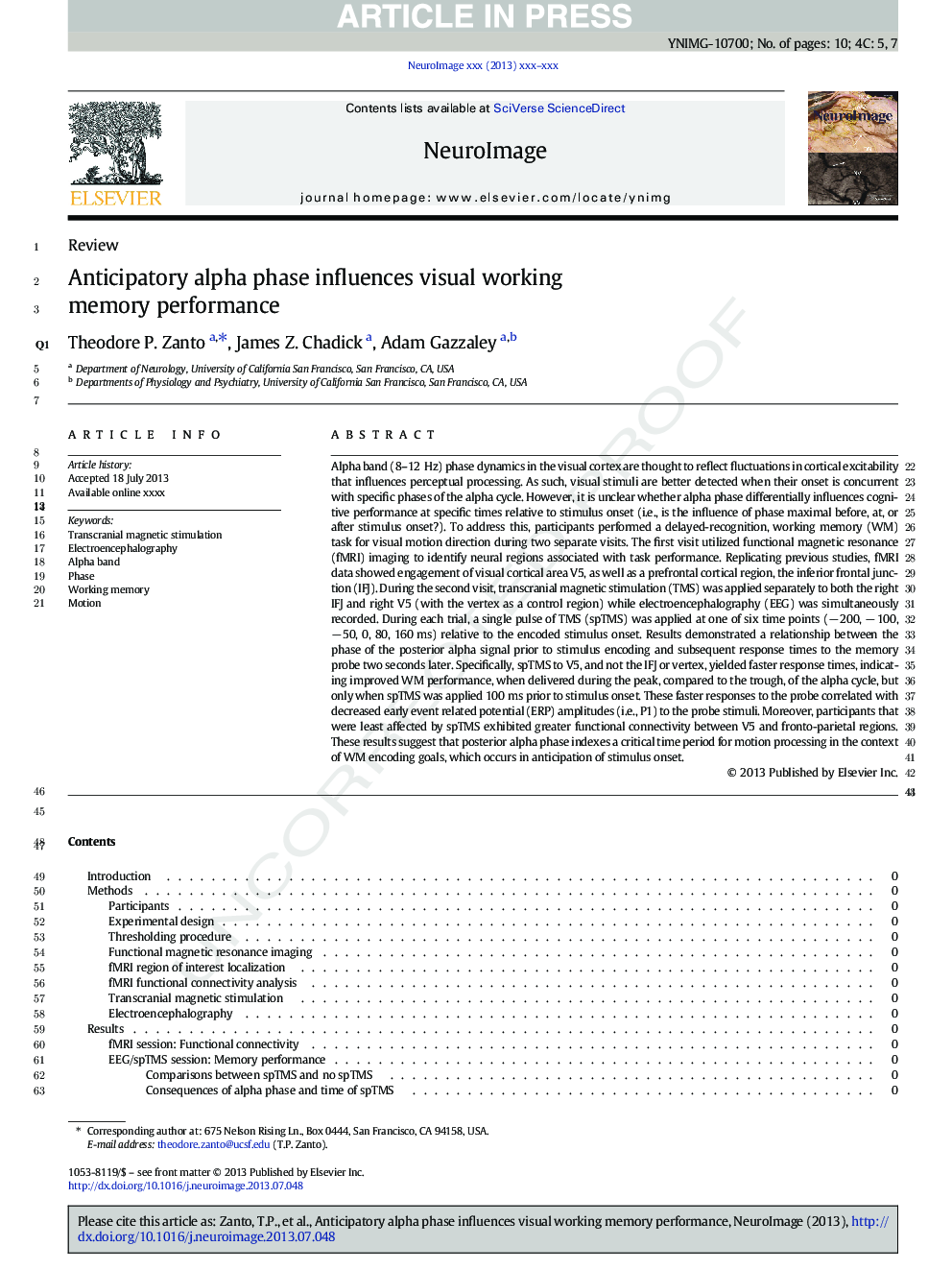| کد مقاله | کد نشریه | سال انتشار | مقاله انگلیسی | نسخه تمام متن |
|---|---|---|---|---|
| 6028362 | 1188702 | 2014 | 10 صفحه PDF | دانلود رایگان |
عنوان انگلیسی مقاله ISI
Anticipatory alpha phase influences visual working memory performance
ترجمه فارسی عنوان
فاز آلفای پیش بینی شده بر عملکرد حافظه کاری بصری تاثیر می گذارد
دانلود مقاله + سفارش ترجمه
دانلود مقاله ISI انگلیسی
رایگان برای ایرانیان
کلمات کلیدی
تحریک مغناطیسی ترانس مغناطیسی، الکتروانسفالوگرافی، گروه آلفا، فاز، حافظه کاری، حرکت
موضوعات مرتبط
علوم زیستی و بیوفناوری
علم عصب شناسی
علوم اعصاب شناختی
چکیده انگلیسی
Alpha band (8-12 Hz) phase dynamics in the visual cortex are thought to reflect fluctuations in cortical excitability that influences perceptual processing. As such, visual stimuli are better detected when their onset is concurrent with specific phases of the alpha cycle. However, it is unclear whether alpha phase differentially influences cognitive performance at specific times relative to stimulus onset (i.e., is the influence of phase maximal before, at, or after stimulus onset?). To address this, participants performed a delayed-recognition, working memory (WM) task for visual motion direction during two separate visits. The first visit utilized functional magnetic resonance (fMRI) imaging to identify neural regions associated with task performance. Replicating previous studies, fMRI data showed engagement of visual cortical area V5, as well as a prefrontal cortical region, the inferior frontal junction (IFJ). During the second visit, transcranial magnetic stimulation (TMS) was applied separately to both the right IFJ and right V5 (with the vertex as a control region) while electroencephalography (EEG) was simultaneously recorded. During each trial, a single pulse of TMS (spTMS) was applied at one of six time points (â 200, â 100, â 50, 0, 80, 160 ms) relative to the encoded stimulus onset. Results demonstrated a relationship between the phase of the posterior alpha signal prior to stimulus encoding and subsequent response times to the memory probe two seconds later. Specifically, spTMS to V5, and not the IFJ or vertex, yielded faster response times, indicating improved WM performance, when delivered during the peak, compared to the trough, of the alpha cycle, but only when spTMS was applied 100 ms prior to stimulus onset. These faster responses to the probe correlated with decreased early event related potential (ERP) amplitudes (i.e., P1) to the probe stimuli. Moreover, participants that were least affected by spTMS exhibited greater functional connectivity between V5 and fronto-parietal regions. These results suggest that posterior alpha phase indexes a critical time period for motion processing in the context of WM encoding goals, which occurs in anticipation of stimulus onset.
ناشر
Database: Elsevier - ScienceDirect (ساینس دایرکت)
Journal: NeuroImage - Volume 85, Part 2, 15 January 2014, Pages 794-802
Journal: NeuroImage - Volume 85, Part 2, 15 January 2014, Pages 794-802
نویسندگان
Theodore P. Zanto, James Z. Chadick, Adam Gazzaley,
